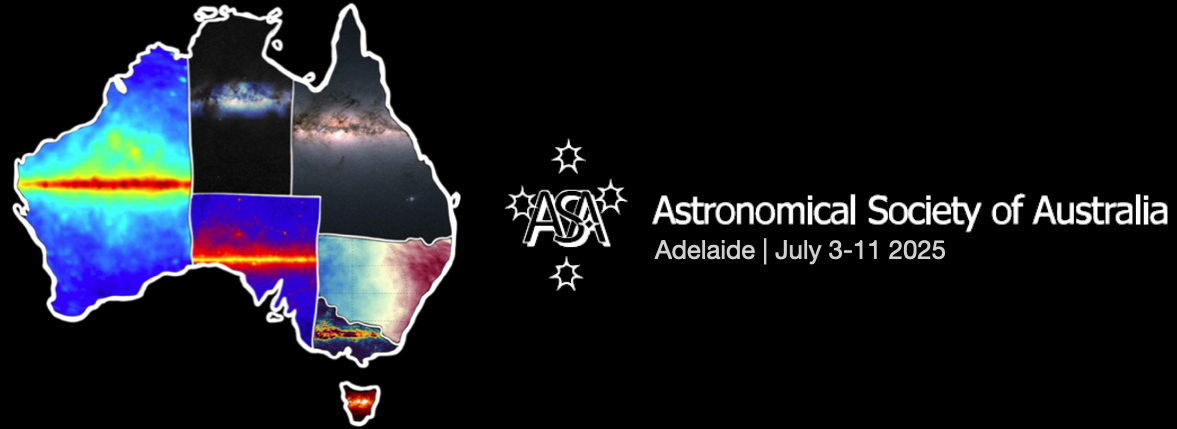Speaker
Description
Astrophysical jets powered by accretion onto supermassive black holes at the centre of galaxies are among the most energetic phenomena in our universe. Charged particles are accelerated along the jets to relativistic speeds, emitting synchrotron radiation observable at radio frequencies. Jets provide feedback and regulate star formation by interacting with the dense clumps of gas in their host galaxy and, on larger scales, the smoother and lower density circumgalactic medium. Sources confined to their host galaxy have characteristic peaked radio spectra, which can be observed with a combination of mid- and low-frequency instruments (e.g. ASKAP + MWA).
Interplanetary scintillation (IPS) is the variability of flux from a radio source on timescales of seconds due to fluctuations in the solar wind. IPS scales with the angular size of the source, and is therefore an excellent method for identifying large samples of compact radio sources without the need for much more resource-intensive techniques such as VLBI. Recent observations have shown that these two seemingly distinct phenomena - that is, strong scintillation and peaked radio spectra - are closely linked. In this talk, I will explain this connection from a theoretical point of view, using jet simulations with calculations of radio emission and scintillation performed in post-processing. I will discuss the relationship between the low-frequency spectral slope and the strength of scintillation for young radio sources, and predict new populations of sources observable with SKA-era telescopes.

